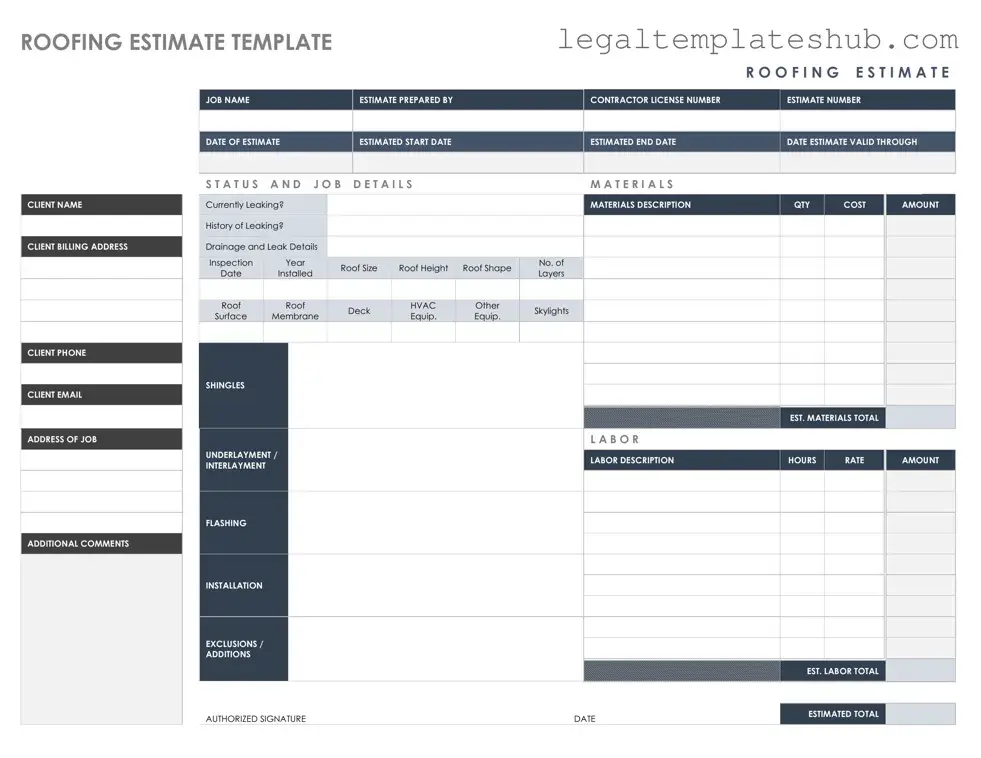Blank Roofing Estimate PDF Form
A Roofing Estimate form is a document used to provide a detailed assessment of the costs associated with roofing services. This form outlines the scope of work, materials needed, and estimated labor costs, helping homeowners make informed decisions about their roofing projects. To get started on your roofing estimate, fill out the form by clicking the button below.
Access Editor
